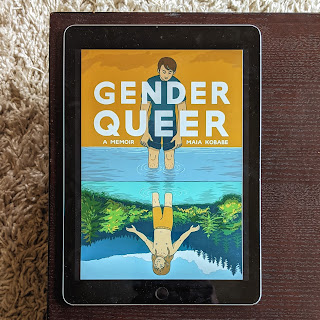How She Read by Chantal Gibson
February is a tedious month in many respects. In Vancouver, winter has been long, it’s very rainy and we are all ready for some sun. This happens every year, but for the last two years, winter has also meant fewer in person visits with friends. Oh, we bundle up and try to meet outside, or go for chilly walks in our toques, but seriously…March is where it’s at, with its tantalizing temperatures and sun, inviting impromptu front lawn get-togethers, and promising a spring retreat of the virus. Well, okay, sure…it still rains a lot, and it’s still kind of cold in March, and it can snow. But whatever, it’s the month when it turns spring, so that’s something!
But February also brings us time to read on those rainy, cosseted winter days, and it brings us Black History Month. I learned that Black History Month has its more formal origins in the United States, when it was celebrated in 1970 at Kent State University, and soon it was a month marked mostly in US educational institutions. In 1976, President Gerald Ford officially recognized Black History Month. In Canada, Member of Parliament Jean Augustine (the first Canadian Black female MP) spearheaded the effort to recognize Black History Month, and the motion was passed unanimously in 1995. By the way, Ms. Augustine seems truly amazing from what read of her achievements.
I wanted to take time this February to read some Canadian literature by Black authors. I always mean to, but in the haze of working and life, I never put aside the time for Black History Month. But now I have LOTS of time and I want to pause and take stock. This is one of the things that I need to do in my life, and it relates to the comments I made in my last post on Jenny Odell’s How to Do Nothing, the idea of “manifest dismantling.” I have made an effort to read more books by Black and BIPOC authors over the last two years. I want to learn more about Black lives and history, to unlearn (or, relearn) the history that I was steeped in as a child in Canada. Right now, this is something I can do to take concrete steps to move forward. I’m going to read two to three books this February for Black History Month. Here is the first:
How She Read, by Chantal Gibson (2019)
Chantal Gibson lives in Vancouver and teaches writing and visual communication in the School of Interactive Arts & Technology at Simon Fraser University. She has written two books of poetry, and I’ll read both this month. How She Read has won or been shortlisted for many awards, and I’m not surprised. I am not a huge reader of poetry, but I’m trying! And this collection is powerful. It moved and inspired me. I read it in two sittings, and this worked for me because the book is immersive and builds on itself. As such, I have some difficulty singling out poems that I liked best, but I’ll highlight three.
The poem How She Read is beautiful. The last lines speak volumes:
every word she speak be a teeth-sucking act of resistance
every word she write be a battle cry
every tap of her pen be the beat of an ancestor’s drum
every word she write be a battle cry
every tap of her pen be the beat of an ancestor’s drum
The second highlight: i’ve come for your demons. It deconstructs language, and dissolves into chaos on the page. I had my trusty pen and notebook by my side, and wrote, “unease/disquiet/violence/evil” as each stanza progressed. It starts with mild dislocation and slides…or slithers?... into something scary. This poem is a tangible shiver. Amazing.
The third is Centrefolds: Delia & Marie-Therese on Opening Night, accompanied by a photograph of one woman, Delia, disrobed to the waist, who represents “Science”; and a painting of another, Marie-Therese, semi-nude, representing “Art” in the poem. The poem is their dialogue, often moving and even witty, and so, so angry. The poem makes the reader complicit:
The third is Centrefolds: Delia & Marie-Therese on Opening Night, accompanied by a photograph of one woman, Delia, disrobed to the waist, who represents “Science”; and a painting of another, Marie-Therese, semi-nude, representing “Art” in the poem. The poem is their dialogue, often moving and even witty, and so, so angry. The poem makes the reader complicit:
Hm. I hear you. Just look at em
lookin at us, readin the captions,
disclaimers, trigger warnings,
hidin behind their cellphones,
tryin not to stare.
lookin at us, readin the captions,
disclaimers, trigger warnings,
hidin behind their cellphones,
tryin not to stare.
I read that the real Marie-Therese was a slave owned by a Canadian property owner. Perhaps Gibson is showing us through Marie-Therese’s words that our Canadian history is not what we have necessarily been taught:
Look here. You’ll find me in every
Canadian art history textbook and
no one talks about how badly I’m
drawn, how poorly I’m rendered.
I know Realism hadn’t kicked in
yet–but come on now.
Canadian art history textbook and
no one talks about how badly I’m
drawn, how poorly I’m rendered.
I know Realism hadn’t kicked in
yet–but come on now.
Please read this collection! I look forward to reading her most recent book of poetry, with/holding, and will update the blog when I do.



Comments
Post a Comment